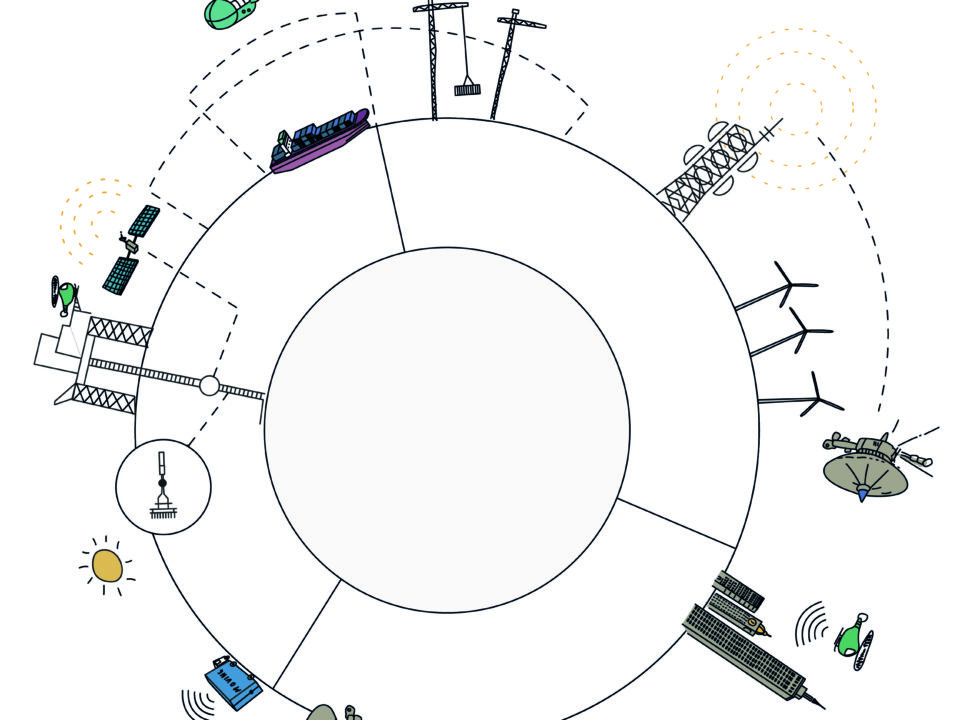Unwilling SEP Licensees: Hold-out Strategies
There is a growing practice among certain mobile technology users to adopt “hold-out” strategies, also known as “efficient infringement”, whereby they use standardised technologies for as long as possible without a licence. This threatens open standards and undermines European leadership in 5G and 6G.
In this document, we present several hold-out strategies commonly used by implementers. The hold-out phenomenon has been well evidenced by European courts. Below we cite cases in which European courts have documented the use of each strategy, along with other evidence, to demonstrate how the strategies work in practice.
In a normal licensing negotiation, the parties engage constructively and at a regular cadence. They respond to offers presented by the other party in a timely manner, tabling well-reasoned arguments and balanced counter-offers, and negotiating based on realistic figures. In cases of hold-out, in contrast, “negotiations” are not carried out in good faith by the implementer. Through use of various delay tactics, they can be made to last for many years. We regularly observe implementers continuing to obfuscate or otherwise delay agreement, all the while integrating the standardised technology in their connected products without a licence. Ultimately, the purpose of hold-out strategies is to cut costs.
We emphasize that hold-out strategies described below are not theoretical. IP Europe members face them every day in the business environment.
Strategy 1: Ignore notifications and other communications for months or years.
By way of example, in Saint Lawrence v Deutsche Telekom, the Court determined the defendant had engaged in licensing negotiations with unreasonable delay, in part because it did not file any counter-offer. In Sisvel v ZTE, the Court found the defendant did not respond to a claim chart for 10 months. In Philips v Wiko, Wiko did not respond to letters indicating infringement and providing relevant information for nearly three years. In Sisvel v Xiaomi, the defendant did not respond to an offer for nearly a year. In Sharp v Daimler, the defendant issued a counter-offer only after Sharp sued, which the Court interpreted as evidence that it aimed to delay the proceedings rather than to have a meaningful commercial discussion with the SEP holder.
Strategy 2: Express a willingness to take a FRAND licence – but only for each individual patent for which infringement, essentiality, and validity is confirmed by the courts.
In Sisvel v. Haier, it emerged that Haier had requested information including claim charts with respect to every one of Sisvel’s SEPs. The company was willing to take a FRAND licence from Sisvel only upon confirmation by the German courts of the validity and infringement of the patents.
Strategy 3: Insist on obtaining unreasonable amounts of information without appropriate confidentiality arrangements in place (e.g. a claim chart for every SEP in a portfolio), and/or refuse or delay signing an NDA agreement as a hold-out tactic.
In Sisvel v. Haier, the Court took the view that requesting the production of claim charts for all of Sisvel’s patents, and this nearly three years after the receipt of the first notification of infringement, was an indication that Haier was interested primarily in delaying the negotiations until the expiration of the patent in suit. In Pioneer v Acer, the Court found the defendant engaged in delaying tactics, including asking for claim charts for every SEP in the portfolio. In Philips v Acer, the defendant asked for claim charts and rejected the calculations made by the SEP holder, even after the Court had proclaimed it to be an infringer. At the same time, the defendant refused to provide its own information, for instance information about sales so that the amount of compensation owed could be determined.
In Sisvel v ZTE, the defendant took seven months to sign an NDA.
Strategy 4: Claim to lack information or to not understand the licence offer, or repeatedly ask for information that the SEP holder has already provided.
In Fraunhofer-Gesellschaft v ZTE, ZTE argued that the original notification by the patent pool lacked technical explanation and that the original offer did not adequately explain how royalties would be calculated – arguments that were not accepted by the Court.
Strategy 5: Buy time by professing willingness to engage in constructive licensing negotiations – even as behaviour suggests otherwise.
Nokia v Daimler is a well-known example of how an implementer can endlessly delay negotiations. In Sharp v Daimler, the Court determined that Daimler had not engaged in negotiations in a “target-oriented manner”. In Philips v Acer, the Court ordered the infringer to render a full and detailed account of its sales, so the amount of compensation owed to the patent holder could be calculated; during negotiations, the infringer had refused to supply the patent holder with information about the geography and value of its sales. In Tagivan v Huawei, the Court found the defendant expressed willingness to take a licence but failed to make a counter-offer.
Strategy 6: Table counter-offers that are obviously unreasonable and unacceptable for the rights holder (e.g. a licensing rate of just 0.001 per cent per patent family), or table a counter-offer only once litigation has been initiated.
In Archos v Philips, the Court found that Archos’ counter-offers were unreasonable; it emerged that Archos had told Philips that it would have to take legal action if the company hoped to obtain more than a few thousand euros in licensing fees. In Fraunhofer-Gesellschaft v ZTE, ZTE expressed willingness to enter into a licence but then failed to make a FRAND counter-offer. In Nokia v Daimler, the defendant set royalty rates based on the value of components, an approach unacceptable to the SEP owner and determined by the Court to not be FRAND.
In Philips v Wiko, it was not until the court proceedings that Wiko characterized the offer from Philips as not being FRAND. At this time, Wiko suddenly argued on several grounds that the offer was not FRAND; these were not accepted by the Court. In the same case, Wiko’s counter-offer to Philips was based on a licensing rate of just 0.001 per cent of sales per patent family, based on the proportion of relevant SEPs owned by Philips. The Court found this counter-offer to not be FRAND: “Wiko’s proposal is based solely on the number of patents held by Philips. There is no sound reasoned analysis of the technical and economic value of Philips’ portfolio”.
Strategy 7: Refuse to enter into a global licence agreement despite having a global business for products that use standards.
In Pioneer v Acer, the Court found the defendant’s offer to be non-FRAND because it was limited to Germany. In Philips v Acer the defendant refused a global licence, instead requesting a licence limited only to Germany. In Unwired Planet, Huawei’s counter-offer of a licence only for the UK was a clear non-starter, taking into account normal industry practice and the global nature of Huawei’s smartphone business.
Strategy 8: Direct the SEP owner to suppliers, or to a subsidiary or holding company, for licences.
In Sharp v Daimler, Daimler claimed that Sharp would breach its FRAND commitment to ETSI if it did not offer licences to Daimler’s suppliers. Daimler’s hold-out strategy focused on sending Sharp repeatedly to its suppliers and refusal to take a licence itself. The Court found that Daimler did not behave as a ‘willing’ licencee and could not rely on a FRAND-defence derived from its suppliers.
In Fraunhofer-Gesellschaft v ZTE, the Court rejected ZTE’s argument that the offer should have been addressed to the company involved in the court case, rather than the parent company: “The fact that the offer was addressed to the parent company and not to the Defendant was not relevant, since the parties were discussing a licensing agreement at the group level and the parent company had itself requested to receive the draft agreement”.
Strategy 9: Insist repeatedly that the licence offer is not FRAND without providing substantive arguments to demonstrate why.
This strategy was at play in Archos v Philips, with Archos tabling several arguments as to why the counter-offer was not FRAND – all of which were rejected by the Court on the grounds they were not sufficiently backed by evidence. In Philips v Wiko, it was not until the court proceedings that Wiko characterised the offer from Philips as not being FRAND. At this time, Wiko suddenly argued on several grounds that the offer was not FRAND but these were not accepted by the Court.
Strategy 10: Refuse to accept licence terms that are confirmed by an EU court to be FRAND.
In Philips v. Acer, after a decision in the Court of Manheim, the defendant rejected several licences offers and also refused to provide the patent holder with information about sales. The District Court of Karlrushe had to order the infringer to render a full and detailed account of its sales to calculate the amount of compensation owed.
Strategy 11: Pursue coordinated hold-out strategies through industry groups.
The European Smart Energy Solution Providers stated in 2020: “Another initiative that started in 2019 was the development of a mutual approach for licensing 3G/4G Standard Essential Patents. Together with associations such as the Fair Standards Alliance, we lobby for the best economic and general solution for our industry and avoid individual settlements with patent holders”.[1] This is an interest group, with membership overlapping that of the Fair Standards Alliance, that advocates for collusive hold-out behaviour.
The FSA, together with ACT – The App Association, was also behind the development of “CWA2” (Core Principles and Practices for Licensing SEPs). This is a set of guidelines developed by implementers that reflects their own commercial interests – and which reads in parts like a codification of hold-out behaviour. CWA2 contradicts European case law on matters such as the extent of information that SEP owners must provide to prospective licensees. It remains to be seen whether courts will interpret companies’ endorsement of documents like CWA2 as an indicator of unwillingness in SEP licensing disputes.
It is also worthy of note that some large tech companies openly advocate some of the hold-out behaviours laid out in this paper on their corporate websites.[2]
To view analysis that also includes examples of hold-out strategies referenced in European case law, please click here.
[1] We note that the text cited was recently adjusted in the 2020 Annual Report that is posted online, to read instead: “Another initiative that started in 2019 was the development of a mutual approach to licensing 3G/4G “Standard Essential Patents” aiming at the best economic and general solution for our industry”. To find the original Annual Report posted, please click on the following link.
[2] By way of example, see https://www.apple.com/fi/legal/intellectual-property/frand/ .



